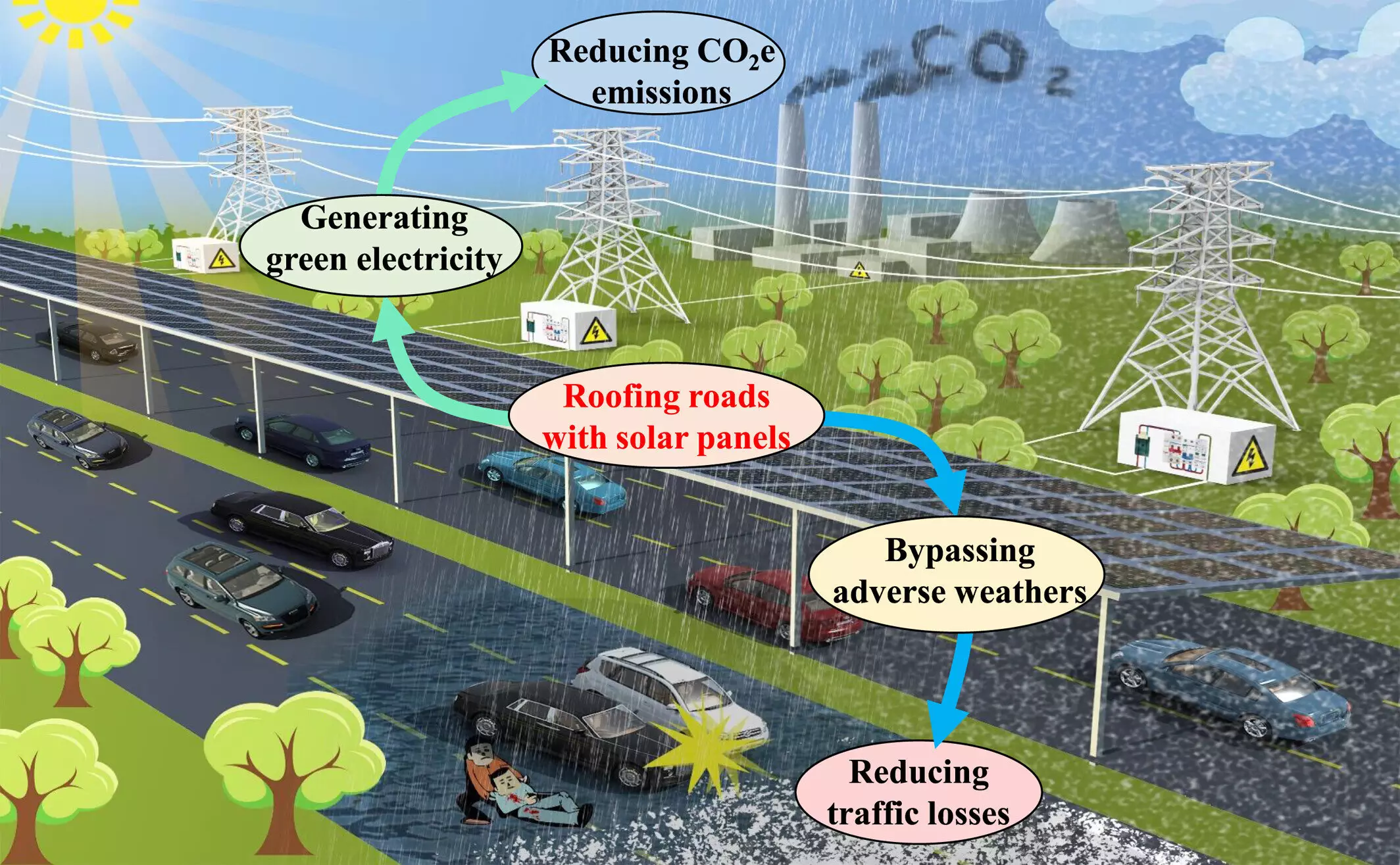As global climate concerns intensify, innovative solutions are becoming increasingly necessary to combat carbon emissions and promote sustainable energy. One such pioneering concept is the installation of solar panel roofs over the world’s extensive highway network. A groundbreaking study illuminates the potential benefits of this idea, estimating that it could reduce carbon emissions by nearly 28% by diminishing our reliance on fossil fuels. This ambitious project envisions a vast network of elevated solar panels, not only generating significant electricity but also providing protection to vehicles from various weather elements.
The brainchild behind this research, Ling Yao, a remote sensing scientist at the Chinese Academy of Sciences, envisions solar roofs spanning the globe’s highways, potentially generating an astounding 17.58 petawatt-hours annually. This figure surpasses 60% of global electricity consumption in 2023, highlighting the transformative impact such an initiative could have on energy production and carbon mitigation.
The Inspiration Behind Innovation
Yao’s idea emerged during a mundane evening commute. Observing the interconnectedness of roads, he envisioned transforming these essential pathways into functional solar energy producers. This reflection signifies a broader trend in renewable energy innovation, emphasizing that solutions can arise from everyday experiences. To date, while there are pilot solar programs in various countries, none have reached the large scale proposed by Yao and his team.
Using existing infrastructure, like highways—over 3.2 million kilometers long—presents a significant opportunity to leverage land that is otherwise taken up. With solar-roofed parking lots already gaining traction, a push towards integrating photovoltaic technology into road systems appears to be the next logical step in the evolution of renewable energy.
In assessing the feasibility of this solar highway initiative, researchers evaluated different global regions and their potential for solar energy generation through installed panels. Each installation would consist of polysilicon photovoltaic panels designed for maximum efficiency. The sheer scale required is staggering: approximately 52.3 billion solar panels across the world’s major highways, which could culminate in an energy generation capacity beyond that of traditional power plants.
Regions characterized by dense highway networks, such as eastern China and the U.S. East Coast, would be prime candidates for this solar conversion. Notably, the potential energy output—up to 17,578 terawatt-hours per year—poses a turning point in the global energy landscape, indicating not just sustainability but also energy independence.
Addressing the Challenges
Despite the optimistic projections, the project is not without challenges. The initial installation costs for solar roofs on highways can be significantly higher—up to four times the expense of ground-based solar systems. Additionally, ongoing maintenance poses logistical challenges given the vast number of panels involved. The practicality of managing and cleaning billions of solar units can’t be overlooked.
However, the safety benefits associated with this innovative concept could offset many of these concerns. The study suggests that solar roofs could decrease road accidents by 10.8% by providing a barrier against harsh weather conditions. By alleviating the dangers posed by rain and snow, this futuristic highway design not only prioritizes energy generation but also enhances public safety.
Yao’s commitment to bridging gaps between potential and reality is commendable. The widespread adoption of solar highway roofs could catalyze a significant shift toward sustainable infrastructure. The vision includes prioritizing long, flat stretches of highway for easier implementation, particularly in regions like the southwestern United States where sunlight is abundant.
Critics of the idea may focus on its scalability or initial investment, but Yao remains hopeful, citing that successful pilot programs could provide tangible evidence of practicality and efficacy. The realization of such projects can inspire confidence and galvanize further investment into renewable solutions, ultimately leading society closer to a sustainable future.
Transforming highways into solar energy producers not only represents an imaginative leap in renewable energy solutions but also underscores the pressing need for innovative infrastructure to combat climate change. Implementing this vision could pave the way for an environmentally friendly energy generation model while simultaneously enhancing road safety. The future of our highways may rest on harnessing the power of the sun—a shift that could illuminate the road ahead for generations to come.


Leave a Reply